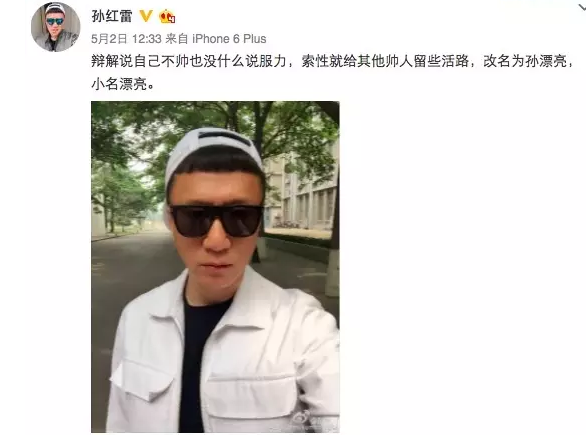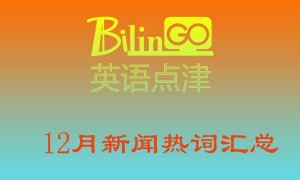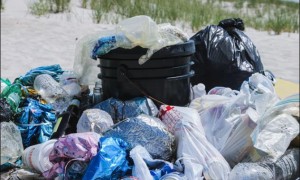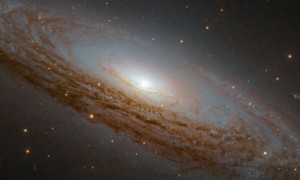臭氧超过PM2.5成为北京第一大污染物
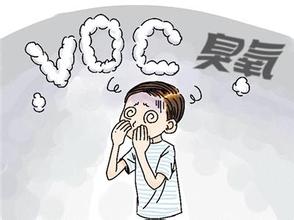
Warm days come with a downside, as masks can’t stop pollutant at ground level in Beijing
温暖日子也有一个不好的地方,那就是口罩已经挡不住北京地面上的污染物了。
Excessive ozone gas has become the prime pollution problem in Beijing in recent days, replacing the notorious PM2.5, and it’s likely to linger for a couple of days, the capital’s environmental monitoring authority said on Monday.
近日,过量的臭氧已经取代了讨厌的PM2.5成为北京的首要污染问题了。首都的环境监测部门周一说,这种情况有可能会延续好几天。
Because of the sunshine, many residents may not have noticed that ozone reached an alarming 242 micrograms per cubic meter at 2 pm on Sunday, according to the Beijing Environmental Monitoring Center.
据北京环境监测中心透露,由于阳光大好,许多市民可能并没有注意到臭氧含量周日时已经达到了报警量,每立方米242微克每立方米。
During warm weather, ground-level ozone increases. It is known to harm lung function and irritate the respiratory system. Exposure to ozone is linked to premature death, asthma, bronchitis, heart attack and other cardiopulmonary problems.
在气候温暖的时候,地面的臭氧含量会增加。众所周知,臭氧会对肺功能和呼吸系统造成损害。暴露在臭氧环境中会导致过早死亡,哮喘,支气管炎,心脏病和其他心肺问题。
On Monday, when clouds blocked the sun, PM2.5 particles returned as the dominant type of pollution in Beijing, the center said. But ozone is expected to return to No 1 on Tuesday and Wednesday.
监测中心称,周一那天,当云层盖过太阳时,PM2.5颗粒又再次变成了北京的首要污染物。但是据估计,周二和周三臭氧又会变成第一名。
Different from the protective layer of ozone in the upper atmosphere, excessive ozone concentration at ground level is tied directly to health. Therefore, experts strongly suggest that people stay indoors around noon to avoid the gas, which, unlike particulate matter, cannot be blocked by protective masks.
和上层大气中的臭氧保护层不一样,过量臭氧主要聚集在涤粘,会直接导致健康问题。因此,专家强烈建议人们尽量在中午的时候呆在室内避开臭氧,臭氧和其他的污染物不同,口罩并不能阻挡它。
Ozone at ground level is generated mainly through complicated photochemical reactions. It is closely related to other air pollutants, such as volatile organic compounds and nitrogen oxides. Levels of ozone typically rise at midday due to strong sunshine and higher temperatures, said Chen Nianliang, a researcher at the monitoring center.
地面的臭氧主要是产生于复杂的光化学反应,和其他空气污染物联系很紧密,比如挥发性有机物和氮氧化物。监测中心的一名研究员陈念良说,由于强阳光和高气温,臭氧含量基本上会在中午的时候上升。
Every summer, ozone concentration typically soars from May to August in Beijing, overtaking PM2.5 as the prime pollutant.
每年夏天从五月到八月,北京的臭氧浓度都会上升,超过PM2.5成为首要污染物。
PM2.5 refers to particulate matter 2.5 microns or less in diameter that harms health.
PM2.5指的是对健康有害的直径小于2.5微米的可吸入肺颗粒。
Last year, the capital saw fewer than 60 percent of days with air quality meeting national standards in the four-month period, and only 35 percent of days in July had good air quality, according to the Ministry of Environmental Protection. The prime pollutant was usually ozone.
根据环境保护部的数据,去年,北京在四个月的时间里只有不到60%的时候空气质量达到了国家标准,七月更是只有35%的日子空气质量好。首要污染物通常都是臭氧。
Summer ozone pollution is not a problem only in Beijing; it has grown into a thorny issue nationwide, the ministry said.
环保部说,夏天的臭氧污染不仅是北京的问题,已经成为了一个全国性的棘手问题。
In 2015, the average ozone concentration in China’s 74 major cities increased by 3.4 percent year-on-year, an increase of 7.9 percent over 2013, especially in the Yangtze River Delta region in the south, said Luo Yi, head of the environmental monitoring department at the ministry, in February.
二月份,环境监察部门主任罗毅说,2015年中国74个主要城市的平均臭氧浓度同比增长了3.4%,相较于2013年增长了7.9%,特别是在南方长江三角洲地区。
The complexity of air pollution is increasing and the problem requires more comprehensive efforts, the ministry said.
该部门称,空气污染的复杂程度也正在增加,解决这个问题需要付出更全面的努力。
In Beijing, the environmental watchdog has taken strict control on the emission of volatile organic compounds and nitrogen oxides, the key ingredients in ozone’s toxic stew.
在北京,环境监察部门对挥发性有机物和氮氧化物的排放进行了严格的控制,这些都是合成臭氧的主要原料。
In addition, the ministry has pushed measures to reduce ground-level ozone and promoted the success against ozone made by Shenzhen, Guangdong province.
另外,环保部门已经制定了措施来减少地面臭氧并在广东省深圳市取得了对抗臭氧的成功。


